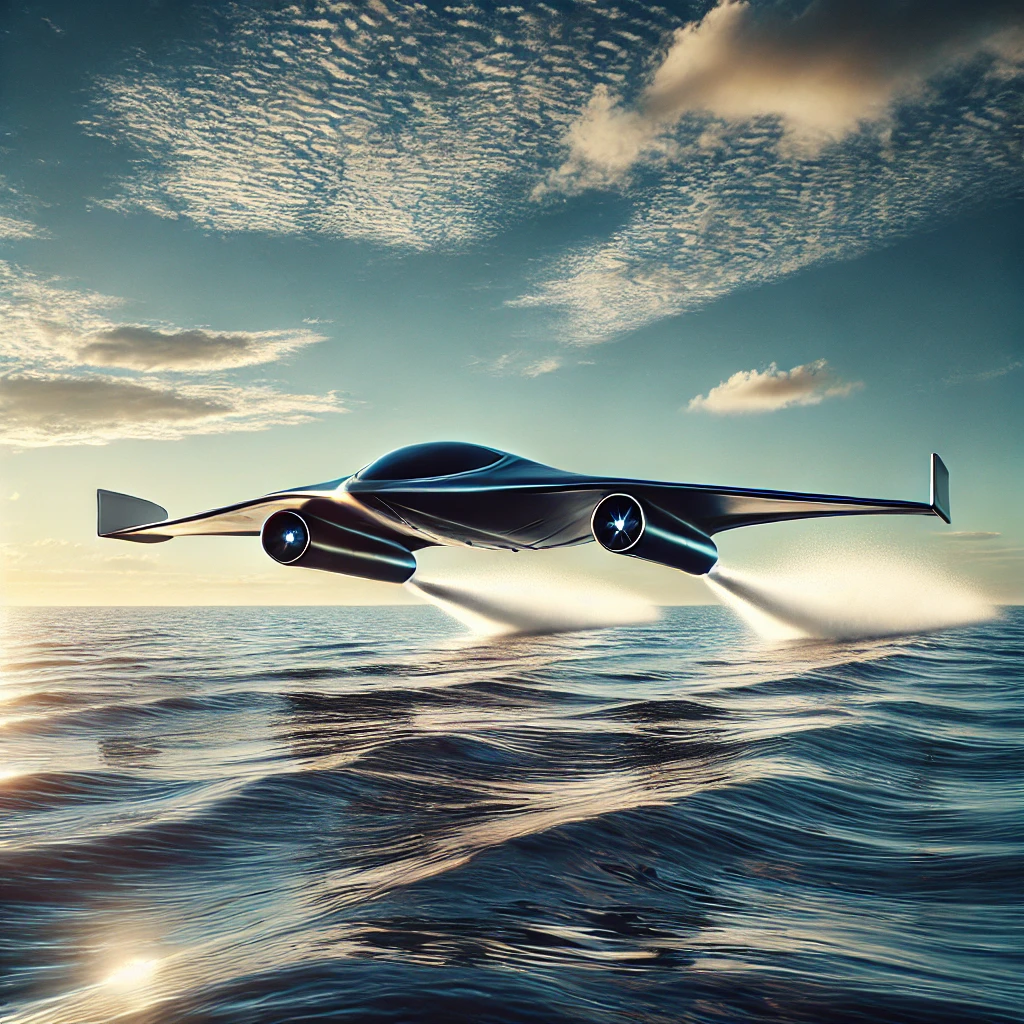Wigwams use the ground effect to fly quickly over the surface of the water and are gaining traction as an economical and efficient mode of transportation. Technical challenges and legal issues need to be addressed.
The ever-advancing science and technology is gradually making a part of our childhood fantasies a reality. Wing-In-Ground (WIG) ships are one of them. WIGs are boats that float on the surface of the water on wings and glide across the water at high speeds. They were first developed in the 1960s, but they didn’t really make their debut until 1976, when a U.S. spy satellite spotted a monster traveling at 550 kilometers per hour in the Caspian Sea. It was later identified as a Soviet wigwam, which was dubbed a “sea monster” because it was impossible for a ship to travel at such high speeds given the state of the art at the time.
The most distinctive feature of the wigwam is that it flies low to the surface of the water. Normally, a wing tip flying through the air creates a strong vortex, a rapidly rotating fluid vortex, which requires more energy to propel the wing forward, which in turn creates a lot of drag on the hull. However, when flying close to the surface, the vortices at the wingtips are significantly reduced. This is because the vortices are not as well developed due to the small gap between the water surface and the wing. Therefore, if the wing is hovering just 5 meters above the water, the lift, or lift force, is much higher than if it were flying through the air.

A ship is in contact with the surface of the water and cannot avoid the hull drag that this creates, but a wigwam has no such hull drag, allowing it to go faster than a supersonic ship gliding on underwater wings. While submerged wings become less efficient as they approach the surface of the water, wings above the surface of the water become more efficient as they approach the surface, an effect known as the “ground effect”. A wigwam uses this effect to keep its hull above the water’s surface and propel itself forward with an airplane propeller engine. Cruising speeds on the water range from 100 kilometers per hour up to 500 kilometers per hour.
These advantages make them a more economical and efficient mode of transportation compared to conventional aircraft or supersonic ships. Because they run directly in the ocean, they don’t need to build runways, which makes them an efficient mode of transportation in areas where it’s difficult to build airports, such as small islands off the coast or small cities along the coast. Furthermore, environmentally, they have great advantages. Unlike traditional ships and airplanes, they can reach high speeds using relatively little fuel, which reduces their carbon footprint and contributes to environmental protection. This is significant in the modern world’s quest for sustainable development, and they are likely to be the green transportation of the future.
The biggest challenge for wigwams is the blue water takeoff and landing. While highly efficient flotation methods have been developed for non-blue water, there are few that can efficiently take off and land in blue water. Solving this problem will require research into different hull geometries and control schemes. Research is still ongoing to improve the safety and efficiency of the wigwam, and it is believed to be a problem that can be solved with a technological leap.
Unlike airplanes, wigs are subject to the effects of seawater, so the structural strength of the lower hull must be significantly higher than that of an airplane. This means that the wig must be lightweight while maintaining high structural strength to operate efficiently. This requires the use of metallic materials in areas where high strength is required and the use of new materials in areas where strength is not an issue. In addition, because the operating areas and altitudes are different from those of an airplane, it is not necessary to use the same expensive navigational equipment used in an airplane. They need to be newly developed to suit their operating characteristics. Above all, the price of the ship must be affordable to make it practical.
There are still a number of technical issues that need to be resolved before a wigwam can become a reality. The time to commercialization will be shortened by making full use of the research results and by involving shipping companies, municipalities, and foreign organizations that are interested in the technology from the outset. The successful commercialization of the Wigwam could usher in a new transportation revolution, which would transform not only the maritime industry but also the global transportation network.
The future is very bright for WIGS, and with constant technological innovation and research and development, we will continue to overcome current challenges and develop further. This will give us access to faster, more efficient and environmentally friendly transportation, which will further improve the quality of life for all of us. The possibilities are endless, and we must continue to work hard to make them a reality.
